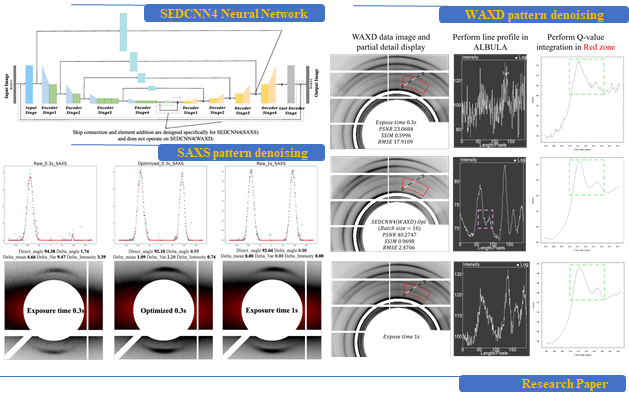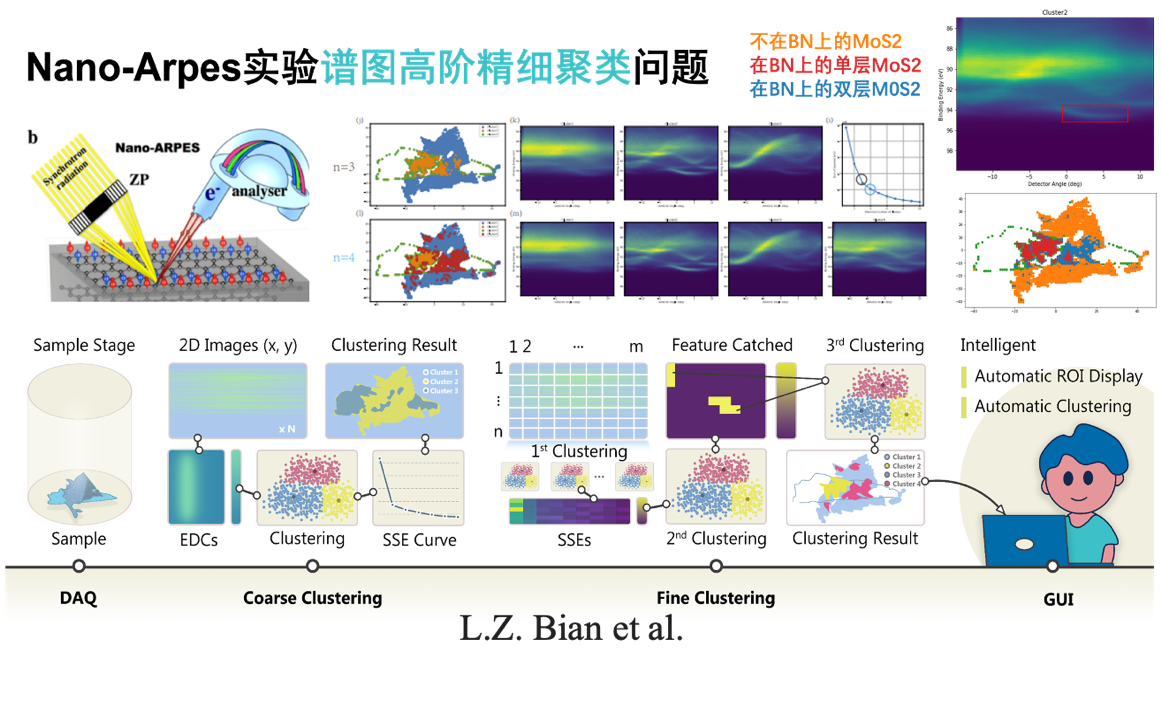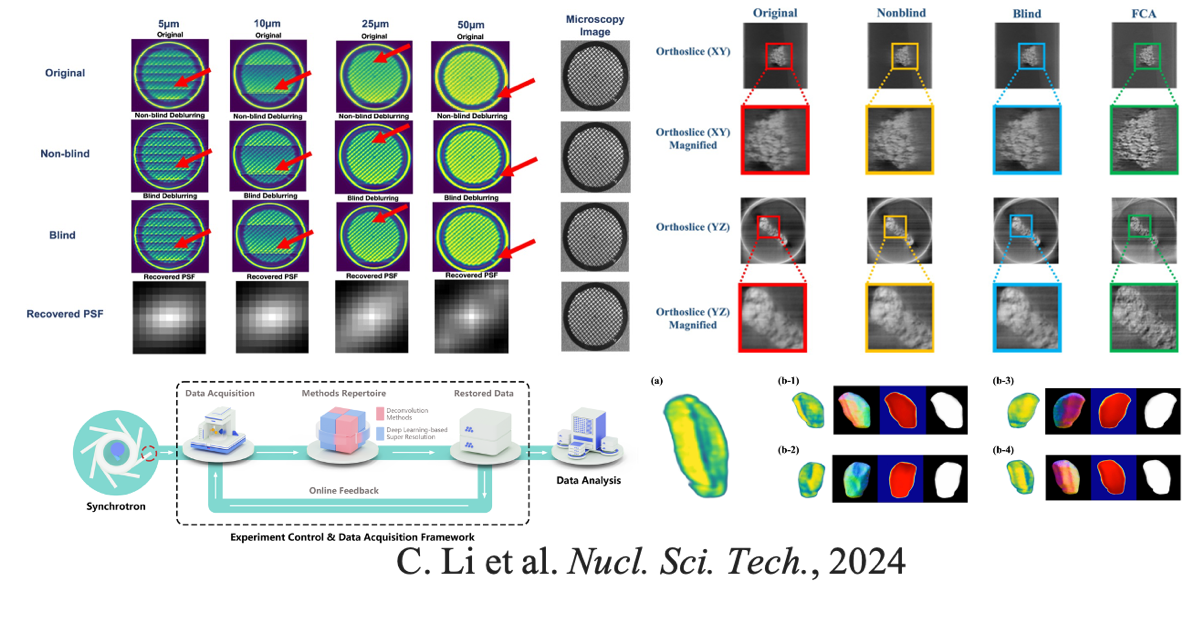
Inspired by pre-training and fine-tuning techniques of large models, researchers have developed an advanced convolutional neural network framework specifically for accurately reconstructing data from X-ray scanning coherent diffraction imaging experiments, improving phase recovery precision and efficiency.

Pan, Xinyu et al. “An efficient ptychography reconstruction strategy through finetuning of large pre-trained deep learning model.” iScience 26 (2023):108420.
To address the complexity and low timeliness of traditional physical analysis methods for high-throughput multidimensional diffraction experiments, a novel 6D tensor tomography method based on "virtual reciprocal space scanning" is proposed. This reduces the experimental scanning dimensions from four to three. Using a deep fully connected neural network, the hidden 3D fiber orientation distribution information in massive 2D diffraction images is extracted, enabling high-precision online analysis of diffraction data and achieving a 10,000-fold increase in analytical efficiency.

Zhao, Xiaoyi et al. “A step towards 6D WAXD tensor tomography.” IUCrJ 11 (2024): 502 - 509.
For in-situ dynamic experiments, a systematic denoising tool has been developed, including supervised SEDCNN and unsupervised SMAE algorithms, which significantly outperform existing state-of-the-art (SOTA) models in training speed and denoising performance, effectively enhancing the recovery of physical information in in-situ dynamic experiments.


Zhou, Zhongzheng et al. “A machine learning model for textured X-ray scattering and diffraction image denoising.” npj Computational Materials 9 (2023): 1-14.
To address the demand for image jitter correction in high spatial resolution synchrotron imaging experiments, an end-to-end image correction method combining sample contour structures and AI-based image enhancement techniques is proposed. This method has achieved excellent performance in image correction tasks for various nano-precision synchrotron imaging methods.

Zhang, Zhen et al. “A general image misalignment correction method for tomography experiments.” iScience 26 (2023): 107932.
By utilizing higher-order fine clustering algorithms, researchers can quickly analyze fine structural changes in scanning angle-resolved photoelectron spectroscopy (NanoARPES) data, potentially revolutionizing ARPES experimental workflows and improving experimental accuracy and efficiency.

Based on Fourier attention mechanism-driven generative adversarial networks (GANs), researchers have proposed a dynamically adaptive algorithm for synchrotron image super-resolution workflow. By organically integrating and deploying cuttingedge algorithms online, this workflow forms a complete closed loop of experimental decision-making, data acquisition, online processing, real-time analysis, feedback control, and experimental decision-making.

Chun Li,Xiaoxue Bi,Yujun Zhang,Zhen Zhang,Liwen Wang,Jian Zhuang,Dongliang Chen,Yuhui Dong,Yi Zhang.Towards adaptable synchrotron image restoration pipeline.
The research team has introduced a deep learning-enabled full-stack data processing pipeline for synchrotron tomography experiments. They highlight that large models for synchrotron tomography, intelligent scheduling centers, and long-term learning strategies at beamlines will become effective solutions to the big data challenges faced in tomography experiments.

Zhang, Zhen et al. “Towards full-stack deep learning-empowered data processing pipeline for synchrotron tomography experiments.” The Innovation 5 (2023):100539.